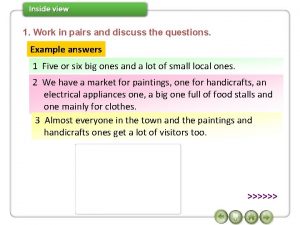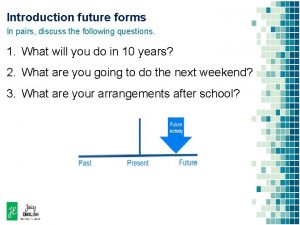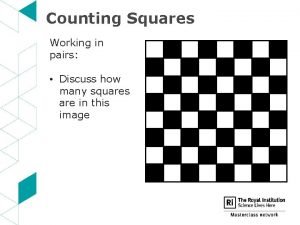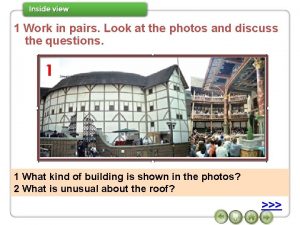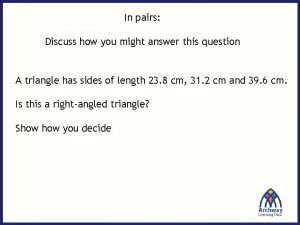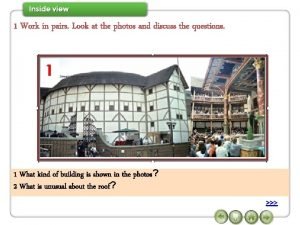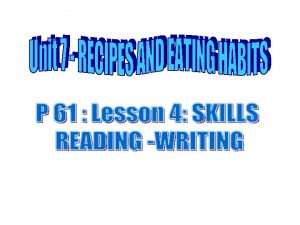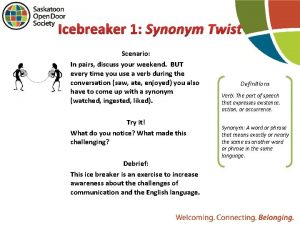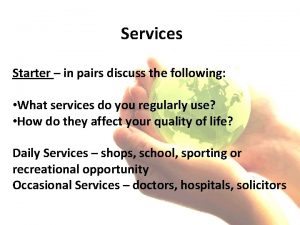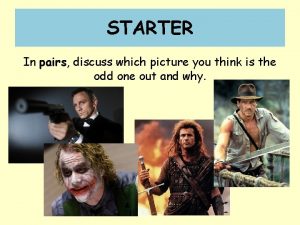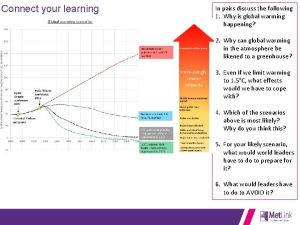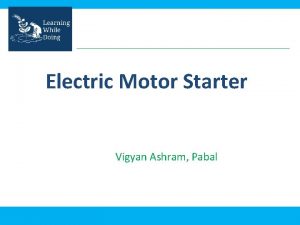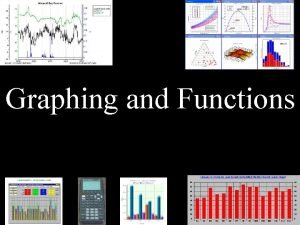STARTER In pairs discuss the following What is










- Slides: 10

STARTER • In pairs, discuss the following: • What is your favourite story and why? • What is your least favourite story and why? • It can be a novel, a play, a film, a poem

Key Stage 3 novel studies Where have we been… Where are we going… • TO KNOW… the content of the course and it's structure. • TO UNDERSTAND… the structure of a narrative • TO BE ABLE TO… write a descriptive passage from a stimulus

Course Structure English Language – 2 exams English Literature – 2 exams • Paper 1 - Explorations in creative • Paper 1 - Shakespeare and the reading and writing (Fiction) 19 th-century novel (Macbeth Reading and Writing and Dr Jekyll and Mr Hyde) • Paper 2 - Writers’ viewpoints and perspectives (non-fiction) Reading and Writing • Paper 2 - Modern texts and poetry (An Inspector Calls, Poetry booklet, unseen poetry)

Course Requirements. . . • GCSE ENGLISH LANGUAGE - Paper 1 Explorations in creative reading and writing • Information The marks for questions are shown in brackets. The maximum mark of this paper is 80. There are 40 marks for Section A and 40 marks for Section B. You are reminded of the need for good English and clear presentation in your answers. • You will be assessed on the quality of your reading in Section A. • You will be assessed on the quality of your writing in Section B. • •

Course Requirements. . . • AO 1: • identify and interpret explicit and implicit information and ideas • select and synthesise evidence from different texts • AO 2: Explain, comment on and analyse how writers use language and structure to achieve effects and influence readers, using relevant subject terminology to support their views • AO 3: Compare writers’ ideas and perspectives, as well as how these are conveyed, across two or more texts • AO 4: Evaluate texts critically and support this with appropriate textual references

Course Requirements. . . • AO 5: Communicate clearly, effectively and imaginatively, selecting and adapting tone, style and register for different forms, purposes and audiences. Organise information and ideas, using structural and grammatical features to support coherence and cohesion of texts • AO 6: Candidates must use a range of vocabulary and sentence structures for clarity, purpose and effect, with accurate spelling and punctuation. (This requirement must constitute 20% of the marks for each specification as a whole. )

TO UNDERSTAND … the structure of a narrative • How are narratives structured? • What are the parts of a narrative called?


TO UNDERSTAND. . . the structure of a narrative • Watch these short films and complete a plot arc diagram for each.

TO BE ABLE TO… write a descriptive passage from a stimulus Choose one of the short films and write a descriptive passage about one of the events in that short story. Remember to use: - Descriptive words - Emotive language - Descriptive verbs
 Work in pairs and discuss the questions
Work in pairs and discuss the questions Work in pairs. answer the questions.
Work in pairs. answer the questions. Activity 9 work in pairs discuss the following questions
Activity 9 work in pairs discuss the following questions Amateurs talk tactics professionals talk logistics
Amateurs talk tactics professionals talk logistics Discuss in pairs
Discuss in pairs How many triangles
How many triangles In pairs. look at the photos and answer the questions
In pairs. look at the photos and answer the questions Work in pairs. discuss the questions
Work in pairs. discuss the questions Work in pairs. look at the photo and answer the questions
Work in pairs. look at the photo and answer the questions In pairs answer the questions
In pairs answer the questions Conversation icebreaker synonym
Conversation icebreaker synonym
